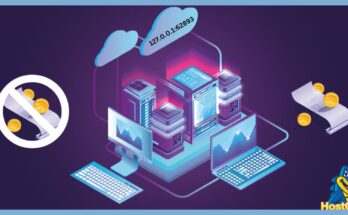Introduction to SSIS 816
SQL Server Integration Services (SSIS) is pivotal in data management and business intelligence. SSIS is a powerful tool for data integration, transformation, and migration. This article delves into SSIS 816, exploring its features, applications, advantages, and disadvantages.
By the end of this guide, you’ll have a thorough understanding of SSIS 816 and how it can be leveraged for effective data management.
What is SSIS 816?
SSIS 816, or SQL Server Integration Services version 816, is a platform for building enterprise-level data integration and transformation solutions. It is part of Microsoft’s SQL Server suite designed to handle data extraction, transformation, and loading (ETL) processes. SSIS 816 allows users to automate workflows, manage complex data migration tasks, and integrate data from multiple sources.
Key Features of SSIS 816
- Data Integration: Seamlessly integrates data from various sources, including databases, flat files, and cloud services.
- Data Transformation: Provides powerful tools to cleanse, aggregate, and manipulate data.
- Workflow Automation: Automates complex workflows and data processes, reducing manual effort.
- Scalability: Scales to handle large volumes of data and complex ETL processes.
- Error Handling: Robust handling and logging features to ensure data integrity and reliability.
- Visual Designer: A user-friendly visual designer who creates and manages ETL workflows.
Technical Specifications of SSIS 816
- Compatibility: Compatible with SQL Server versions 2016 and later.
- Languages Supported: Supports multiple programming languages, including C#, VB.NET, and T-SQL.
- Data Sources: Connects to various data sources, including SQL Server, Oracle, MySQL, and Azure.
- Performance: Optimized for high performance with parallel processing capabilities.
- Security: Features secure data transfer and encryption options.
Applications of SSIS 816
- Data Warehousing: Building and maintaining data warehouses for business intelligence.
- Data Migration: Migrating data between different systems and databases.
- Data Integration: Integrating data from disparate sources into a unified view.
- ETL Processes: Designing and implementing ETL processes for data transformation.
- Reporting: Preparing data for reporting and analytics.
Comparative Analysis: SSIS 816 vs. Other Data Integration Tools
| Feature | SSIS 816 | Talend | Informatica | Apache Nifi |
|---|---|---|---|---|
| Integration | Excellent | Very Good | Excellent | Good |
| Transformation | Excellent | Very Good | Excellent | Good |
| Performance | High | High | High | Moderate |
| Usability | User-Friendly | Moderate | User-Friendly | Moderate |
| Cost | High (Licensing) | Low (Open Source) | High (Licensing) | Low (Open Source) |
| Real-Time Processing | Limited | Available | Available | Available |
| Scalability | Excellent | Good | Excellent | Good |
User Experience with SSIS 816
Interface
SSIS 816 features a user-friendly interface with a drag-and-drop visual designer, making it accessible for users with varying technical expertise. The interface simplifies the creation and management of complex ETL workflows.
Performance
The performance of SSIS 816 is optimized for handling large volumes of data and complex transformations. Users can expect high-speed data integration and transformation with parallel processing and efficient resource management.
Support
SSIS 816 benefits from Microsoft’s comprehensive support, including extensive documentation, online forums, and customer support services.
Installation and Configuration
Installation
Installing SSIS 816 involves setting up SQL Server and the Integration Services component. Detailed installation guides are available to assist users through the process.
Configuration
Configuring SSIS 816 requires setting up data sources, defining connection managers, and configuring package properties. Proper configuration ensures optimal performance and security.
Data Transformation Capabilities
SSIS 816 offers a robust set of data transformation tools, including:
- Data Cleansing: Removing duplicates, correcting data formats, and handling missing values.
- Data Aggregation: Summarizing data to provide insights and analytics.
- Data Mapping: Mapping data from source to destination, ensuring consistency.
- Data Enrichment: Enhancing data quality by integrating additional information.
Data Migration Using SSIS 816
SSIS 816 simplifies data migration through its comprehensive ETL capabilities. Users can easily migrate data between different systems, databases, and formats. The platform supports incremental data migration, ensuring that only new or changed data is moved.
ETL Processes in SSIS 816
The core functionality of SSIS 816 revolves around its ETL processes. Users can design complex ETL workflows to extract data from multiple sources, transform it to meet business requirements and load it into target destinations. SSIS 816 supports both batch and incremental ETL processes.
Security Features of SSIS 816
SSIS 816 includes several security features to protect data during integration and transformation:
- Encryption: Encrypts sensitive data during transfer and storage.
- Authentication: Supports Windows and SQL Server authentication for secure access.
- Access Control: Defines user roles and permissions to restrict access to sensitive data.
Performance Optimization Techniques
To optimize the performance of SSIS 816, users can implement several techniques:
- Parallel Processing: Leverages multiple processors to speed up ETL processes.
- Efficient Resource Management: Allocates resources effectively to avoid bottlenecks.
- Data Partitioning: Splits large datasets into smaller, manageable chunks.
- Indexing: Uses indexes to improve data retrieval speed.
Common Issues and Troubleshooting
Users may encounter several common issues while using SSIS 816, including:
- Connection Failures: Troubleshoot by verifying connection strings and network settings.
- Performance Bottlenecks: Identify and resolve resource constraints or inefficient transformations.
- Data Quality Issues: Implement data cleansing and validation to ensure data accuracy.
Best Practices for Using SSIS 816
To maximize the benefits of SSIS 816, users should follow the best practices:
- Plan ETL Processes: Design ETL workflows with clear objectives and steps.
- Optimize Transformations: Use efficient transformation techniques to improve performance.
- Monitor and Maintain: Regularly monitor ETL processes and perform maintenance to ensure optimal performance.
- Document Workflows: Maintain thorough documentation of ETL workflows for future reference.
Latest Innovations in SSIS 816
Recent advancements in SSIS 816 include enhanced integration with cloud services, improved performance optimization, and new transformation tools. These innovations ensure SSIS 816 remains a cutting-edge data integration and transformation solution.
Advantages of Using SSIS 816
- Efficiency: Automates data processes, reducing the need for manual intervention.
- Scalability: Scales to meet the demands of growing data volumes and complexity.
- Flexibility: Supports a wide range of data sources and transformation options.
- Cost-Effective: Reduces the cost of data integration and transformation through automation.
- User-Friendly: Intuitive visual designer simplifies the creation of ETL workflows.
Disadvantages of Using SSIS 816
- Complexity: It may require a steep learning curve for beginners.
- Resource-Intensive: Can be resource-intensive, impacting system performance.
- Licensing Costs: Requires SQL Server licensing, which can be expensive for small businesses.
- Limited Real-Time Processing: Primarily designed for batch processing, with limited real-time capabilities.
- Dependency on SQL Server: Tight integration with SQL Server may limit flexibility for some organizations.
Future Prospects for SSIS 816
As data grows in volume and complexity, the future of SSIS 816 looks promising. Microsoft will likely continue investing in new features and improvements, ensuring that SSIS 816 remains a leading tool in data integration.
Conclusion
SSIS 816 is a powerful and versatile tool for data integration, transformation, and migration. Its extensive features, robust performance, and user-friendly interface make it well-suited for various data management tasks. While there are some challenges, such as licensing costs and complexity, the advantages of using SSIS 816 far outweigh the drawbacks. For organizations looking to streamline their data processes and improve efficiency, SSIS 816 is a valuable asset.





